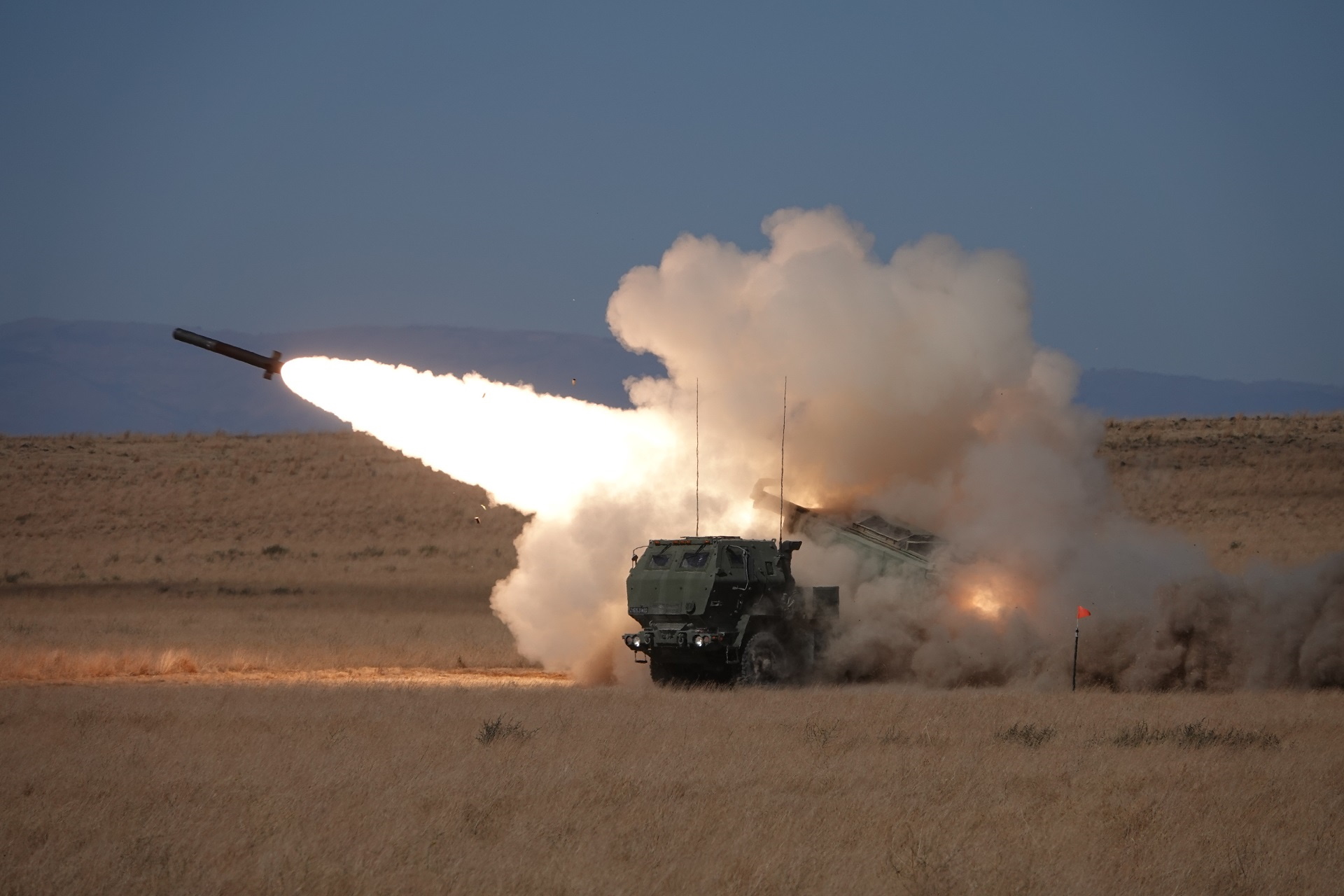FIGHTING TOGETHER AS AN INTEGRATED FORCE
Land and air elements worked hand-in-hand at Exercise Forging Sabre 2021 to give a clear picture of the battlefield and find the most optimal strike asset to take down the various hostile targets.//Story by BENITA TEO //Photos by CHUA SOON LYE & SINGAPORE ARMY
Unmanned Aerial Vehicles (UAVs) from the Republic of Singapore Air Force (RSAF) and the Singapore Army pick up the presence of hostile forces. Scanning from varying altitudes, they quickly paint a precise picture of where the threats are and begin tracking their movements. At the Command Post (CP), the Command and Control Information System (CCIS) identifies the High Mobility Artillery Rocket System (HIMARS) as the best-suited asset to take out the air defence threat. As soon as that threat is eliminated, an AH-64D Apache attack helicopter swoops in to take out the moving target on the ground.
Suddenly, a new threat is identified on the ground. The CCIS recommends re-roling a nearby F-15SG aircraft to take on the target and commanders accept its recommendation. On receiving the new instructions, the fighter jet, which was equipped for air-to-air warfighting, seamlessly switches to fighting air-to-ground. The pilots zero in on the target, taking it out in a single pass. The threat is neutralised.
This is merely a slice of the missions being carried out at Exercise Forging Sabre 2021 (XFS21). Conducted from 14 to 25 Sep at Mountain Home Air Force Base (MHAFB), Idaho, United States, XFS is the Singapore Armed Forces' (SAF's) pinnacle sense-and-strike exercise, which brings a wide array of assets from the RSAF and the Army together to put their integration and interoperability to the test.
Sensing elements such as UAVs work hand-in-hand with the various land and air strike elements to home in on hostile targets and take out the adversaries. At XFS21, man and machine also work as one, such as commandos and STrike ObserveRs Mission or STORM teams lasing for live GBU-56 Laser Joint Direct Attack Munitions dropped by F-15SGs to guide them to destroy multiple targets in a single pass.
Re-roling to fight better
The CCIS makes use of technology such as artificial intelligence (AI) and data analytics to create a comprehensive picture of the entire battlefield. It also performs weapon-to-target matching, identifying the types of threats and recommending the most optimal asset or weapon to take them out. This means that assets configured for a specific mission could be called on to change course and take out a different type of target instead.
Seeing with a fresh pair of eyes
Making its debut at XFS is the VELOCE 15 mini-UAV (V15 mUAV), the latest in the Army's suite of sensors. The hybrid vertical take-off and landing fixed-wing system drone will replace the current Skyblade III mini-UAV. Compared to its predecessor, it takes half the manpower and half the amount of time – 10 minutes – to set up.
The V15 mUAV works with the Heron 1 UAV to scan the battlefield. The larger Heron 1 UAV provides a wider bird’s eye view of the area, while the V15 mUAV zeros in on specific targets. At XFS21, the V15 mUAVs were paired with larger assets so as to support manoeuvre forces in sense-and-strike missions.
The vast training area in MHAFB is prime hunting ground for the V15 mUAV, with the absence of natural obstacles and the low level of airspace congestion. However, Idaho’s harsher weather conditions means the crew must work harder to maintain the drones.
Said V15 mUAV logistics specialist 2nd Sergeant (2SG) Abdul Haziq: "The winds at the training ground are especially strong, so the tentages (for sheltering the operators and equipment) tend to be blown away easily."
"So in addition to preparing the logistics for the mission, such as the V15 mUAV's chargers, batteries and other accessories, when pitching the tentages I have to make sure they are properly secured and the hinges and joints don't break in the wind." This is the 2SG Abdul Haziq's first time participating at XFS. The 24-year-old was in charge of ensuring that the mUAVs were carefully packed and shipped to MHAFB and while there, seeing to the logistical needs of the operators.
Land-air integrated fighting
Coordinated land-air strikes were also exercised, through the cooperation between the HIMARS and Apaches. As part of the integrated operations, the HIMARS would fire at air defence targets, paving the way for the attack helicopters to take out moving targets on the ground.
This pairing is a critical one because the Apaches, being close-range attack helicopters, are vulnerable to air defence threats when they swoop down low to fire at targets. The HIMARS plays a crucial role in defending them from these attacks as they prepare to open fire.
This is the first time that the HIMARS are exercising at MHAFB.
For first-time XFS participant and full-time National Serviceman Corporal (CPL) Adon Yap, seeing the HIMARS in action as part of the larger exercise ecosystem has been a fulfilling experience.
Said the 20-year-old HIMARS operator: "It's a once-in-a-lifetime experience because it's the first time I get to carry out live-firing on the HIMARS and witness it in action. The climate and terrain here are completely different from Singapore, which provides us with a new training environment. We also have the chance to collaborate with troops from RSAF, which can help us improve on our sense-and-strike capabilities."










